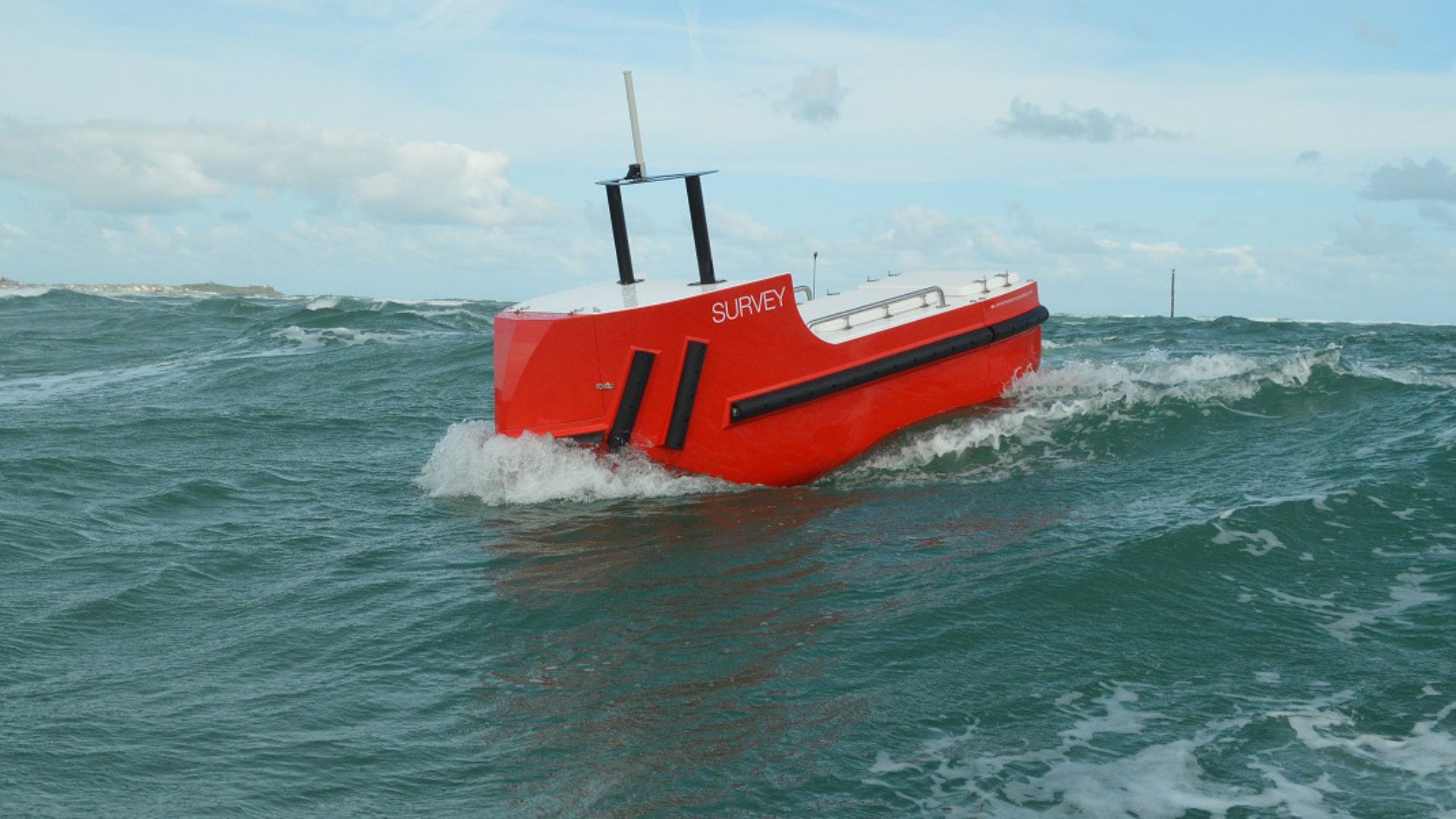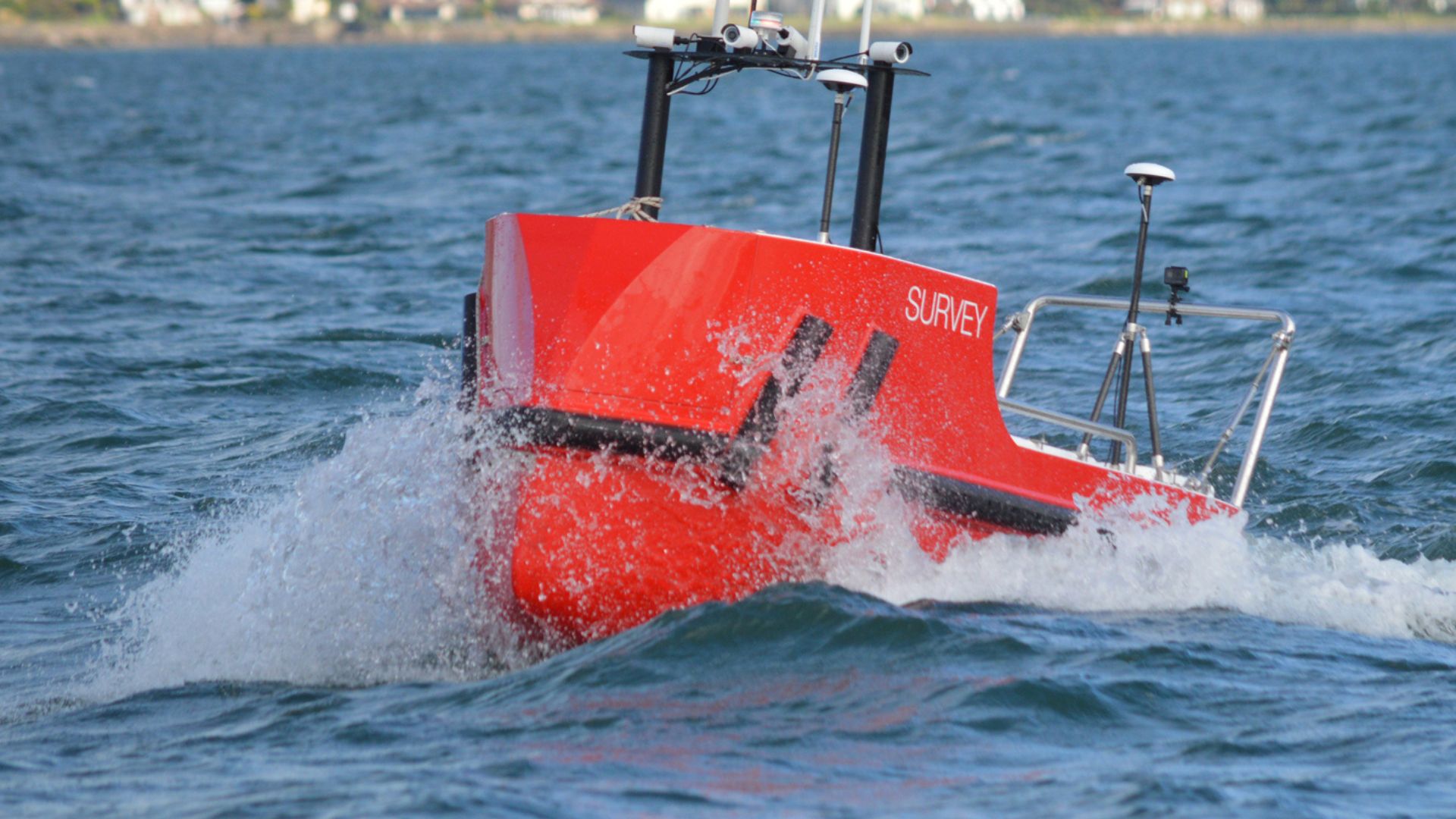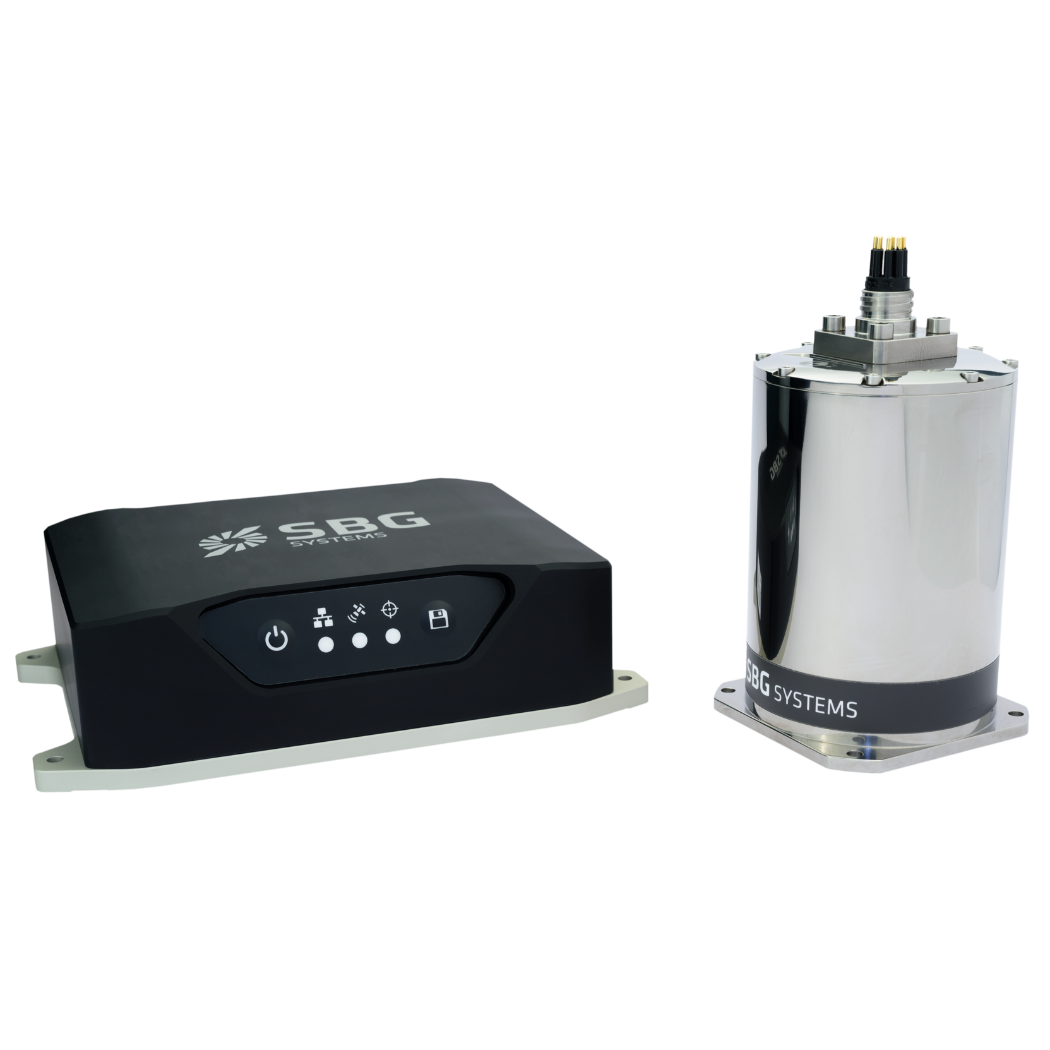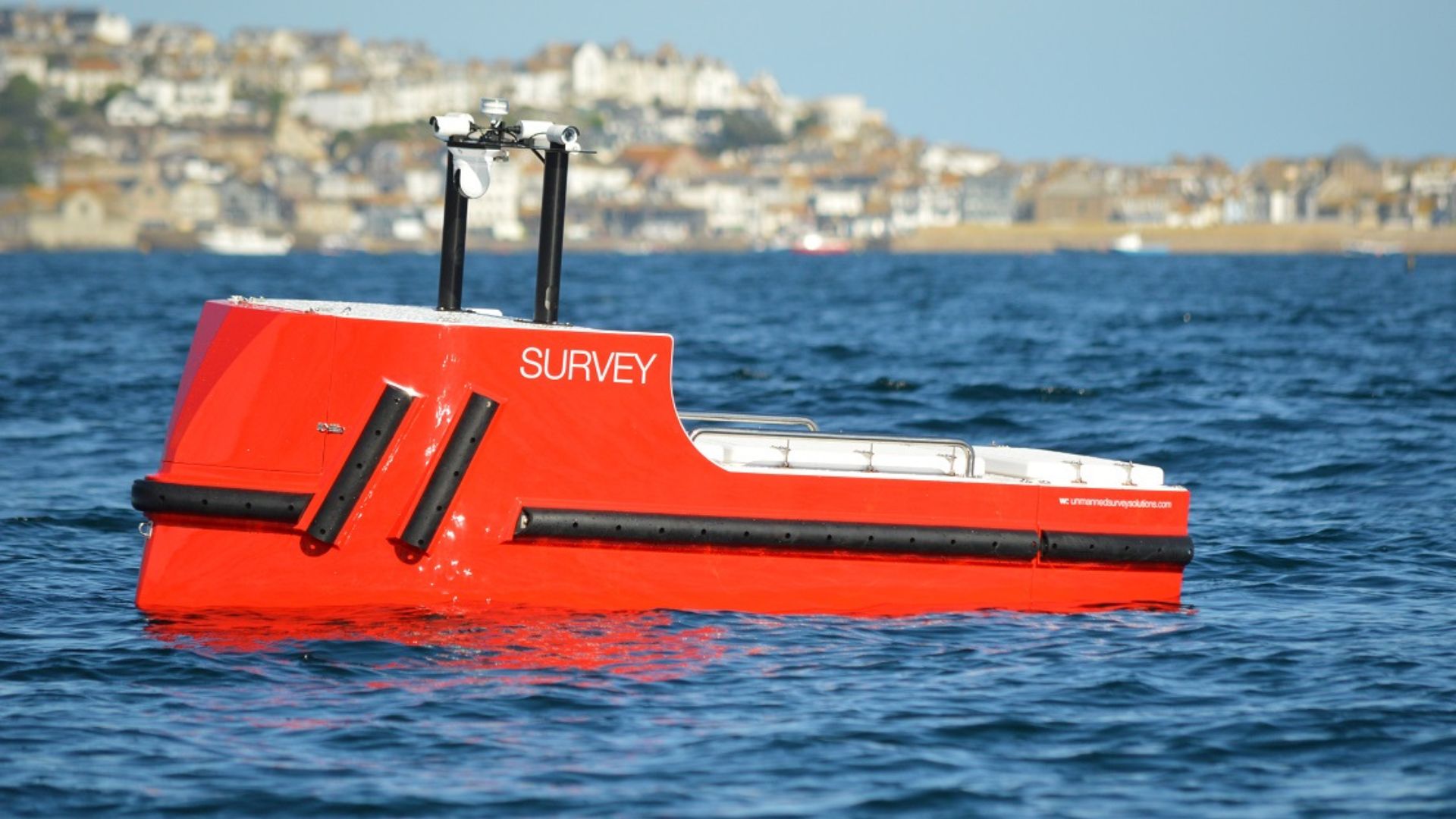usv lidar
Navsight enables multi-beam & laser surveys onboard USV
Motion compensation and geo-referencing of both LiDAR and Sonar.
“Navsight Apogee provides exceptional performance when used in our nearshore and offshore surveys. Combined with its low power, small installation footprint and short initialisation times it’s the perfect solution for all USV operations.” | James Williams, Director USS
The scalable accession class USV
The UK-based company Unmanned Survey Solution (USS) has created a very unique Unmanned Surface Vessel called the “Accession Class USV” using SBG’ Navsight INS. Designed to meet the surveyors needs for today and tomorrow, this USV incorporates a modular design which offers three variable boat lengths depending on the desired application. The base boat length of 3.50m can be extended to 4.25m or 5.00m by adding additional hull sections.

Fully equipped for hydrographic applications
The standard USV Hydrographic payload includes the highest industry standard sensors to meet IHO special order surveys. These consist of a R2Sonic SONIC 2024 Multibeam sonar, an SBG Apogee Navsight INS + GNSS solution, and Valeport MiniSVS & SWIFT SVP for measuring sound velocity.
They acquire data using Hypack or QINSy Hydrographic software for mission planning, acquisition, post-processing, and final products. This un-crewed platform is safer and more cost-effective than manned vessels for nearshore and offshore operations.
Adding a LiDAR for a full 3D environment
Although the Accession USV is payload agnostic and fully customer configurable, the standard configuration can also be interfaced with a mobile LiDAR such as the Carlson Merlin laser scanner for mapping terrestrial structures to create a full 3D point cloud above and below water.
This is only achievable by using the embedded SBG Inertial Navigation System (INS) which is extremely versatile for both shallow and deeper water regions in either open sky or challenging GNSS environments such as under bridges and tree canopies, or in urban regions where tall buildings often obscure the GNSS horizon.
In such situations, the centimetric level RTK position accuracy is greatly improved using SBG’s post-processing software called Qinertia. This PPP and PPK capable software offers single or virtual base station modes and can even incorporate users’ own base station RINEX data.



Navsight Apogee marine
Highly Versatile, Navsight Apogee grade delivers the best performance under GNSS outages, making it ideal for challenging Shallow to Deepwater applications. Navsight Apogee consists of an Apogee grade Inertial Measurement Unit and connected to Navsight, a rugged processing unit embedding the fusion intelligence and the GNSS receiver (option).

Ask a quotation for Navsight Apogee marine
Do you have questions?
Welcome to our FAQ section! Here, you’ll find answers to the most frequent questions about the applications we showcase. If you don’t find what you’re looking for, feel free to contact us directly!
What are wave measurement sensors?
Wave measurement sensors are essential tools for understanding ocean dynamics and improving safety and efficiency in marine operations. By providing accurate and timely data on wave conditions, they help inform decisions across various sectors, from shipping and navigation to environmental conservation.
Wave buoys are floating devices equipped with sensors to measure wave parameters such as height, period, and direction.
They typically use accelerometers or gyroscopes to detect wave motion and can transmit real-time data to shore-based facilities for analysis.
What is bathymetry?
Bathymetry is the study and measurement of the depth and shape of underwater terrain, primarily focused on mapping the seafloor and other submerged landscapes. It is the underwater equivalent of topography, providing detailed insights into the underwater features of oceans, seas, lakes, and rivers. Bathymetry plays a crucial role in various applications, including navigation, marine construction, resource exploration, and environmental studies.
Modern bathymetric techniques rely on sonar systems, such as single-beam and multibeam echo sounders, which use sound waves to measure water depth. These devices send sound pulses toward the seafloor and record the time it takes for the echoes to return, calculating depth based on the speed of sound in water. Multibeam echo sounders, in particular, allow for wide swaths of the seafloor to be mapped at once, providing highly detailed and accurate seafloor representations.
Bathymetric data is essential for creating nautical charts, which help guide vessels safely by identifying potential underwater hazards like submerged rocks, wrecks, and sandbanks. It also plays a vital role in scientific research, helping researchers understand underwater geological features, ocean currents, and marine ecosystems.
What is a buoy used for?
A buoy is a floating device primarily used in maritime and water-based environments for several key purposes. Buoys are often placed in specific locations to mark safe passages, channels, or hazardous areas in bodies of water. They guide ships and vessels, helping them avoid dangerous spots like rocks, shallow waters, or wrecks.
They are used as anchoring points for vessels. Mooring buoys allow boats to tie up without having to drop anchor, which can be especially useful in areas where anchoring is impractical or damaging to the environment.
Instrumented buoys are equipped with sensors to measure environmental conditions like temperature, wave height, wind speed, and atmospheric pressure. These buoys provide valuable data for weather forecasting, climate research, and oceanographic studies.
Some buoys act as platforms for collecting and transmitting real-time data from the water or seabed, often used in scientific research, environmental monitoring, and military applications.
In commercial fishing, buoys mark the location of traps or nets. They also help in aquaculture, marking the locations of underwater farms.
Buoys can also mark designated areas such as no-anchoring zones, no-fishing zones, or swimming areas, helping enforce regulations on the water.
In all cases, buoys are critical for ensuring safety, facilitating marine activities, and supporting scientific research.
What is buoyancy?
Buoyancy is the force exerted by a fluid (such as water or air) that opposes the weight of an object submerged in it. It allows objects to float or rise to the surface if their density is less than that of the fluid. Buoyancy occurs because of the difference in pressure exerted on the object’s submerged portions—greater pressure is applied at lower depths, creating an upward force.
The principle of buoyancy is described by Archimedes’ principle, which states that the upward buoyant force on an object is equal to the weight of the fluid displaced by the object. If the buoyant force is greater than the object’s weight, it will float; if it is less, the object will sink. Buoyancy is essential in many fields, from marine engineering (designing ships and submarines) to the functionality of floating devices like buoys.
